Jesse Hemphill has come up with another excellent knife for deer hunters.
Here is how the Hemphill Town Creek II performs in the field.
by Leon Pantenburg
Knivesshipfree.com is a Survivalcommonsense.com sponsor. I did not get a free knife for this review, and neither KSF, Jesse Hemphill or anyone else has any input into this review. All I ever promise is a fair shake, and this review is my opinion, based on use.
A knife for deer hunting is a very personal tool. There is no perfect style or design, and everyone has their own preferences when it comes to handle, blade length, steel, point, grind etc.
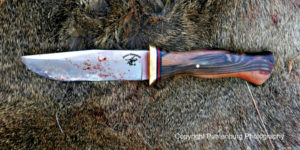
The Town Creek worked really well in the field.
Here are my preferences/prejudices about deer hunting knives: I want a rigid blade, length between four and six inches, with a handle at least four inches long that will not get slippery when wet. The knife must have good steel with a durable, safe sheath.
The Jesse Hemphill Town Creek II fits all those criteria, and I carried it on a successful deer hunt recently.
Here are the Town Creek II specifications (Courtesy of Knivesshipfree.com)
| Overall Length: | 9 1⁄8“ |
| Blade Length: | 4 3⁄4“ |
| Blade Steel: | A2 Tool Steel |
| Blade Thickness: | .182″ |
| Weight: | 6.6oz. |
Here’s how it played out: the deer dropped in its tracks from the heart/lungs shot and was dead when I walked up on it. I paused a few moments to pay my respects, then the Town Creek went to work. The under-the-tail cutting went smoothly, and the initial spine-down, belly-up cut that opens the abdominal cavity was fine. The design of the point worked well, and none of the entrails were pierced. As a skinner, the Town Creek has a curved belly that works well for separating the hide from the carcass.
Here is what I found out:
Grind: The blade is flat ground, with a micro bevel. It is a good slicer, and fairly easy to maintain and keep a sharp edge on. This is not my favorite grind – convex is. I’ve proven to my satisfaction that a convex makes the best skinning and gutting knife. Naturally, you’ll get other opinions on this, and who is to say?
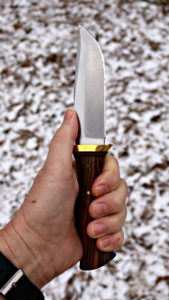
The generously-sized handle makes the knife easy to handle. It never got slippery or dangerous to use.
Handle: The Moran-style handle fits my hand well. Any handle under four inches long usually doesn’t work for me, but the Town Creek’s is generous, and thick enough to give me a good grip. I typically use latex and/or cut protective gloves when field dressing an animal, and the handle never got slippery or dangerous to use.
The handle also has an understated quillon, which keeps the user’s hand from sliding up on the blade. This is important when working inside the body cavity.
Point: A clip point with a swedge is about optimal as far as I’m concerned. This point works well for a hunting knife and it is my point of choice in a hunter.
Steel: A2 is a fine steel that is frequently overshadowed by some of the super steels. But my experience has been that A2 can handle most tasks without any problems whatsoever.
Frankly, on a hunting knife, I can’t really tell the difference between A2 and my favorite CPM 3V when it comes to edge holding ability. Of course, I also have this obsessive-compulsive need to strop knives to wicked, scary sharp, so none of my knives ever get dull. I’ll sharpen all the knives in the hunting camp, and at noon, will help people zero their hunting rifles. Once you reach a certain age, the “old guy” should earn his keep around the campfire.
Blade length: At 4-3/4 inches, the blade is about right for a hunting knife. It is large enough to handle the skinning and quartering, but not so long as to be unwieldy when working inside the abdominal cavity.
Sheath: The Town Creek comes with an attractive leather sheath. It protects the edge and the user.
Not a deal breaker, but…
I had to work really hard to find some nit-picky, ticky little thing about the Town Creek II I didn’t like. So here it is, and for most people this wouldn’t – or shouldn’t – be a consideration.
My saw generally gets left behind when I’m deer hunting, because I cover a lot of ground and have to go lightweight. That also means any animal I harvest may be a long way from the road. My knife must gut, quarter, split the ribcage, remove the lower legs and head, and skin the carcass. The Town Creek did all these tasks really, really, well, but I couldn’t split the ribcage with it.
After I tried unsuccessfully to split the deer’s ribcage with the Hemphill, I tried with another quality blade, also with a flat grind and micro bevel. Neither knife could handle the task. My Bark River Bravo 1.25 LT – with convex grind – did work. If this ribcage thing is a consideration for you, take along a folding saw. Actually, some sort of saw should be in your hunting gear anyway.
I’ve used two Hemphill blades on two different deer this season, the Town Creek II and a Custom Damascus, and I am impressed. Both handle well, and either could end up being your favorite hunting knife.
Please click here to check out and subscribe to the SurvivalCommonSense.com YouTube channel – thanks!

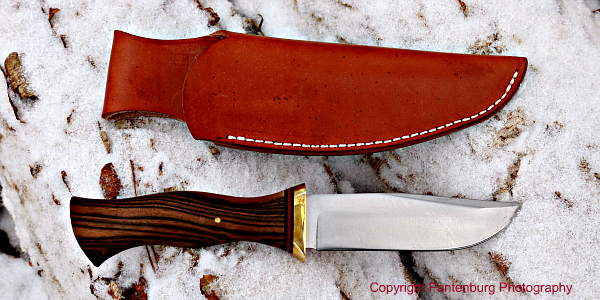
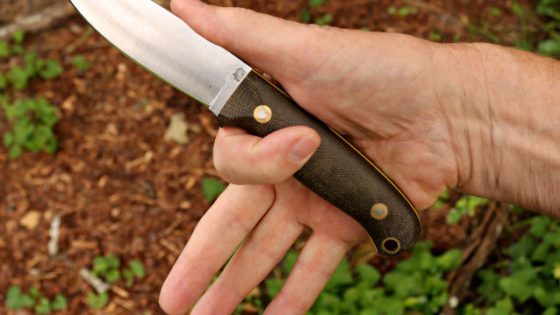
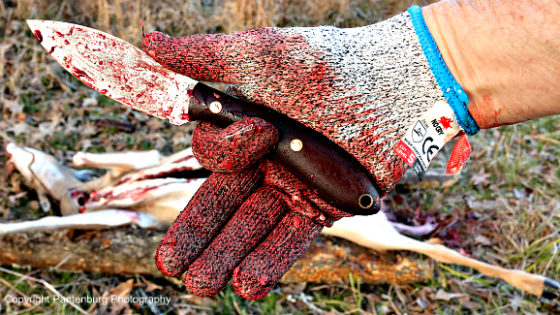
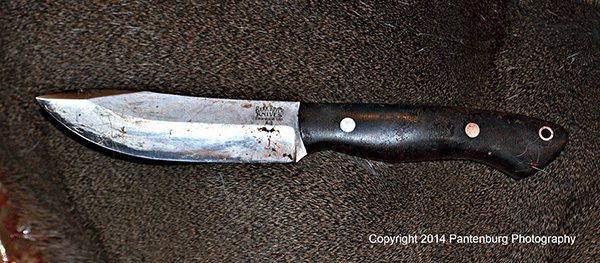
Leave a Reply